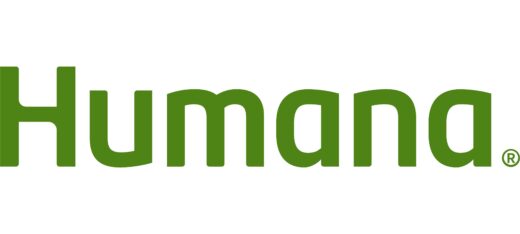Written by Shannon Lorenzen
HealthCare Writer
Reviewed by Diane Omdahl
Expert Reviewer
We aim to help you make informed healthcare decisions. While this post may contain links to lead generation forms, this won’t influence our writing. We follow strict editorial standards to give you the most accurate and unbiased information.
In most cases, it’s your healthcare provider’s job to file Medicare claims for any services you receive. However, on rare occasions, you’ll receive a bill for services covered under Original Medicare (Medicare Part A and Part B) when your healthcare provider doesn’t file a claim promptly. In those instances, you may need to file a claim on your behalf.
Before you take action, you should first ask your doctor or healthcare supplier to file the claim. They have up to 12 months to do so. Nevertheless, if it’s close to the end of that timeframe and your doctor still hasn’t complied, you may need to file the claim yourself. To do that, you’ll need to fill out and mail a Medicare Patient’s Request for Medical Payment form (also known as the CMS-1490S claim form).
The form itself is relatively simple. However, it includes a few pages of instructions, which can make it feel daunting. So what do you need to do to accurately file a claim? Let’s take a look.
What Information Do You Need to Fill Out This Form?
Medicare will need you to fill out a patient request form with some basic information about yourself as well as the service or medical item you are filing about. You’ll need to provide:
- Your name, date of birth, address and phone number
- Your Medicare number
- A description of the illness, injury or service for which you received treatment
- An itemized bill
- If applicable, you’ll also need to provide information about any health insurance coverage you have outside of Medicare, including a policy number.
What Needs to Be Included On Your Itemized Bill for Reimbursement?
For Medicare to accurately process your request, you’ll need to submit an itemized bill with your request form. The bill should contain information about your claim, including:
- Date and place of service
- Description of illness or injury diagnosis and any medical supplies furnished to you as a result of this diagnosis
- Charge for service
- The name and address of your doctor or healthcare provider, as well as their National Provider Identifier (NPI), if known.
Since bills often list more than one doctor or provider, you should circle or highlight the appropriate name to make it easier for your claim to be processed. You should also cross out any other services or supplies that are not relevant to your claim.
If your bill doesn’t list your diagnosis, take the time to accurately and thoroughly fill out the section of the form asking for this particular information (Section 2, as of July 2019).
You can download and print an updated copy of the Medicare Reimbursement Form here.
Medicare Assignment Issues and Part B Claim Forms
You may need to submit a Medicare’s 1490S form if you see a doctor who doesn’t accept Medicare assignment.
While the vast majority of Medicare providers accept normal payment terms, others will accept you as a patient but will charge an additional 15 percent beyond Medicare’s payment rate directly to you. These providers also tend to ask for upfront payment, leaving you to fill out refund forms later.
Can You Get Reimbursed for a Claim When You Were Traveling Outside of the U.S.?
Medicare generally does not cover payment for medical services received outside of the U.S. That said, there are some unique circumstances where they may pay if you meet the criteria. Cruise lines and foreign hospitals have historically been known for leaving reimbursement requests to you.
Foreign Travel (including Canada and Mexico)
There are two specific situations when Medicare may pay for healthcare treatment you received in a hospital outside of the United States:
- You were in the U.S., had a medical emergency and the closest hospital was a foreign hospital.
- You were traveling through Canada between Alaska and another U.S. state “without unreasonable delay,” experienced a medical emergency and the closest hospital was a foreign hospital.
- You live in the U.S. and a foreign hospital is closer to your home than the nearest U.S. hospital. In this circumstance, the medical care you receive does not have to be an emergency to be covered by Medicare.
U.S. territories, such as Puerto Rico, are considered domestic travel by Medicare.
Shipboard Services
If you’re traveling and need medical care while on a ship, Medicare may pay for the services if all of the following requirements are met:
- You have Medicare Part B benefits
- Your physician is legally authorized to practice in the U.S.
- The ship is in a U.S. port or within 6 hours of the ship arriving or departing from a U.S. port.
If the ship is further than 6 hours from a U.S. port and you receive medical care while on it, Medicare will not pay for the services.
If you’re filing a claim to get reimbursement for shipboard services, you must also include a copy of the ship’s itinerary.
Is There a Time Limit to File a Medical Payment Form Claim? And How Long Does It Take?
You must file a claim within one calendar year from the date of service. Once your claim is filed, it can take up to 60 days to process your request.
Where Do You Submit Medicare Payment Claims?
As a patient, you should mail your completed form, your itemized bill, and any supporting documents to your state’s Medicare Administrative Contractor (MAC). You can find the address on the chart included on the last twelve pages of the form. You’ll need to find the address that best corresponds with both:
- The reason for your claim submission (Vaccinations, Part B, Durable Medical Equipment, Foreign Travel, or Shipboard Services)
- Either the state you live in or the state in which you received the service. It varies depending on your claim, so pay close attention to the chart to make sure you’re submitting the right information to the right location.
Medicare Supplement
Some Medigap plans cover your remaining out-of-pocket costs in all of these circumstances, while other plans are more limited. What each plan has in common is that they can only cover services that Original Medicare covers. You’ll have to contact your plan separately once Medicare approves its share of charges.
Medicare Advantage
These plans operate outside of Original Medicare’s payment system. If you have reimbursement issues with a Medicare Advantage (Part C) plan, you’ll have to contact your insurer directly.
If you want more information about your Medicare options, there are plenty of ways to get assistance. You can call a licensed, independent agent via HealthCare.com at any time to help find the answers to your Medicare questions.
Thank you for your feedback!


 by
Diane Omdahl |
Updated on
August 29, 2025
by
Diane Omdahl |
Updated on
August 29, 2025 





